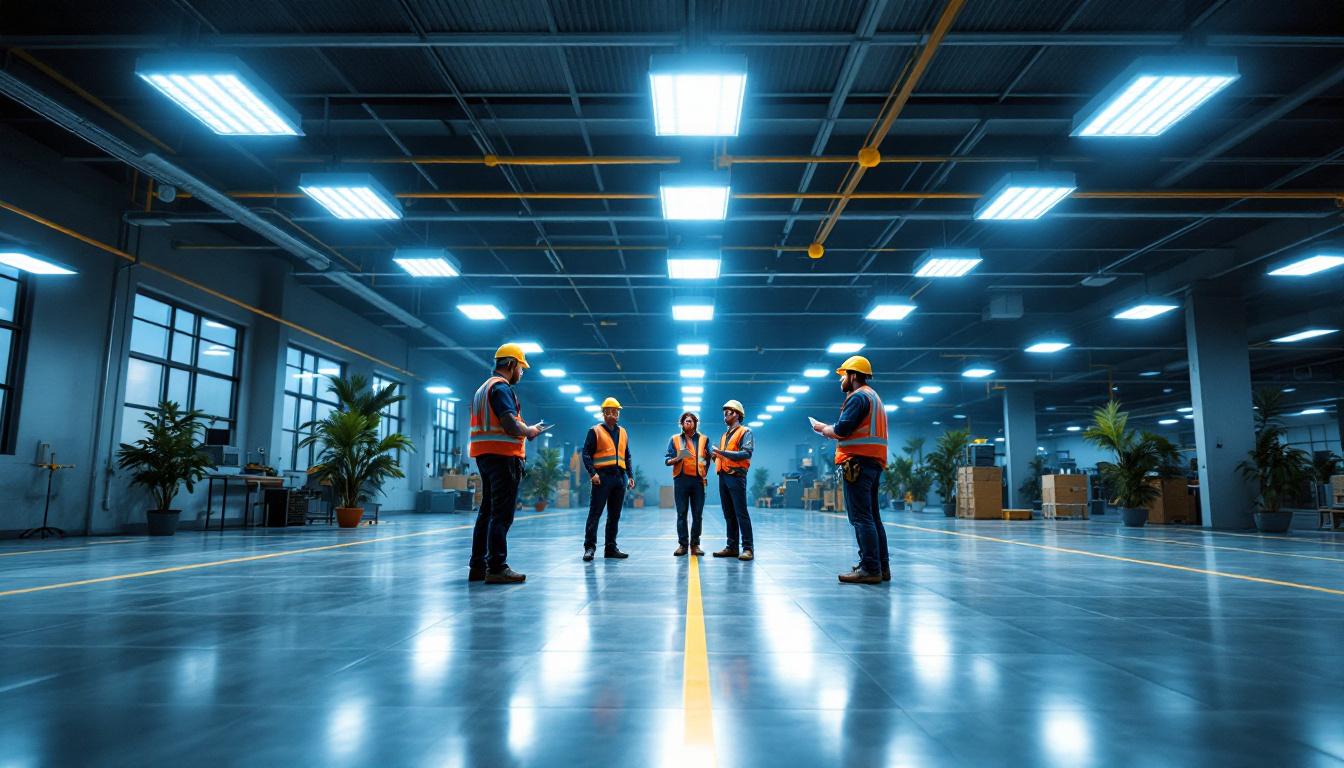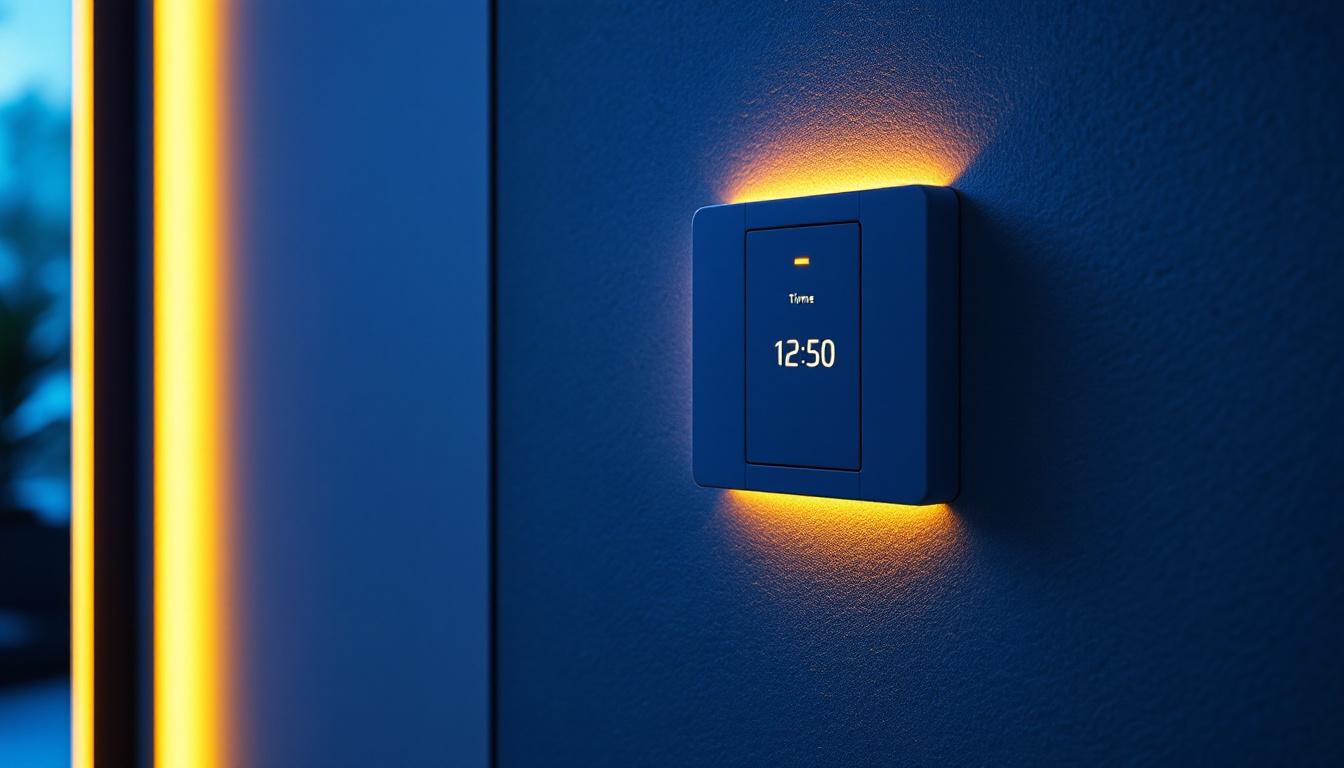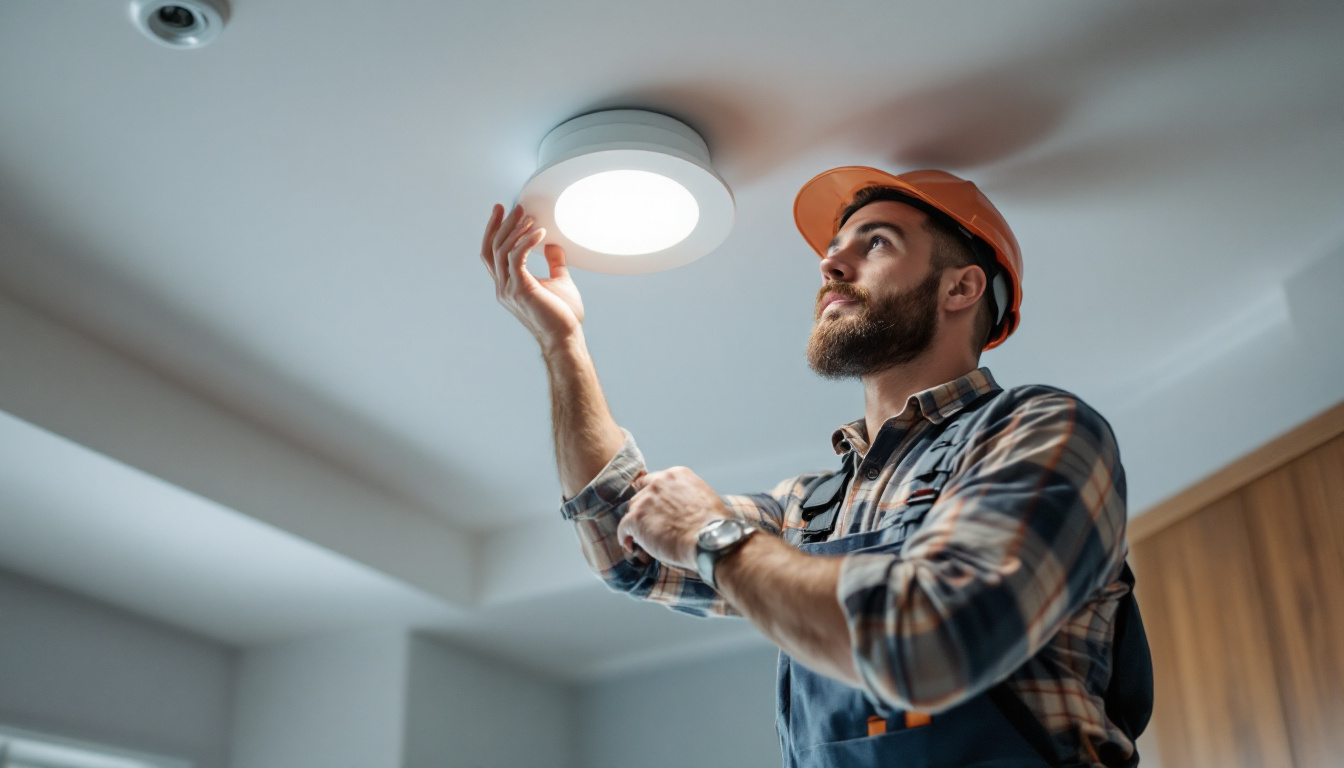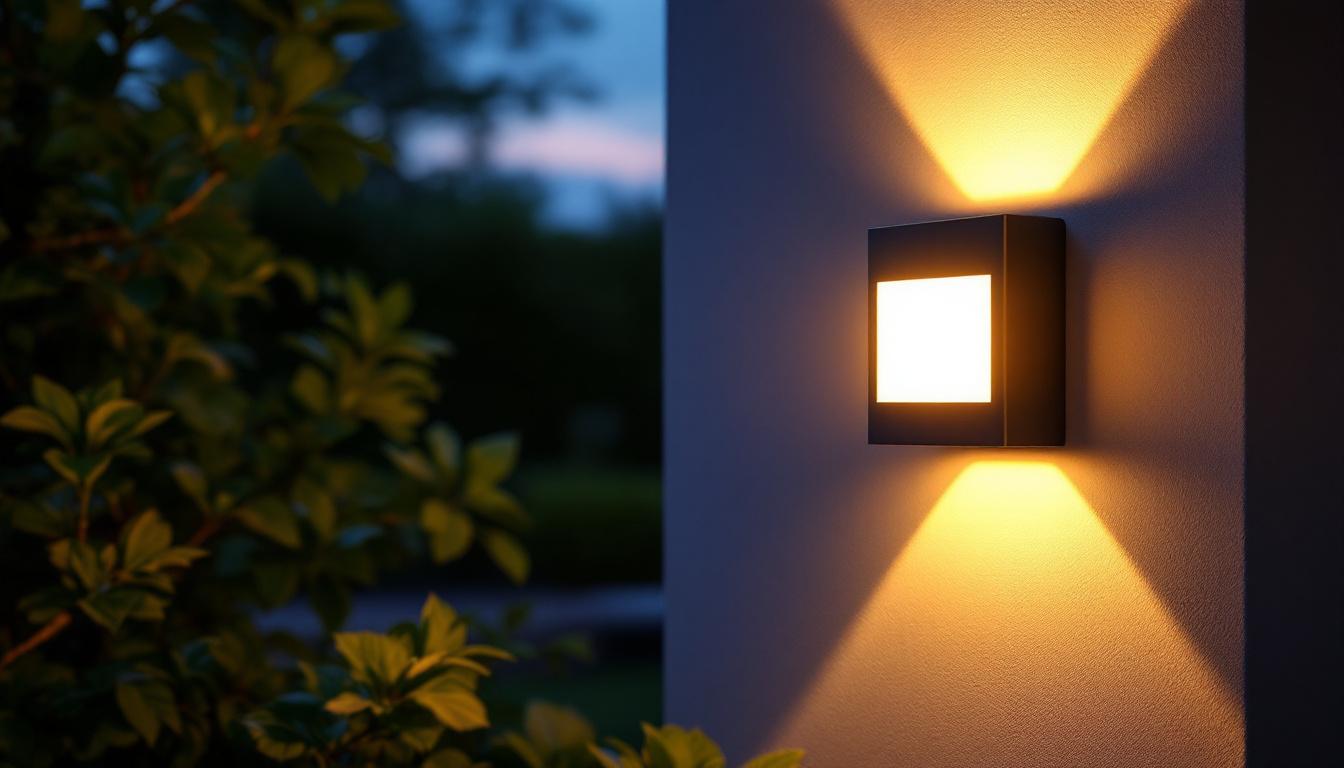
As the demand for sustainable energy solutions continues to rise, solar-powered commercial lighting has emerged as a viable and efficient option for businesses. Lighting contractors play a crucial role in implementing these systems, and understanding the intricacies of solar technology is essential for success. This comprehensive handbook aims to equip lighting contractors with the knowledge they need to navigate the world of solar-powered commercial lighting.
Solar energy is harnessed from the sun’s rays and converted into electricity through photovoltaic cells. These cells are typically made from silicon and are designed to absorb sunlight, generating direct current (DC) electricity. This electricity can then be converted into alternating current (AC) for use in commercial lighting systems.
Solar panels are the most recognizable component of solar energy systems. They are installed on rooftops or in open areas where they can receive maximum sunlight. Understanding how these panels work and their efficiency ratings is crucial for lighting contractors, as it directly impacts the performance of the lighting systems they install. The efficiency of solar panels can vary significantly, often ranging from 15% to over 22%, depending on the technology used. Higher efficiency panels can produce more electricity from the same amount of sunlight, making them a valuable choice for space-constrained installations.
Moreover, advancements in solar technology continue to emerge, such as bifacial solar panels that can capture sunlight from both sides, and thin-film solar cells that offer flexibility and lightweight options for various applications. These innovations not only enhance energy production but also open up new possibilities for integrating solar power into diverse architectural designs.
A solar-powered lighting system consists of several key components, including solar panels, batteries, charge controllers, and LED fixtures. Each component plays a vital role in ensuring that the system operates efficiently and effectively.
Solar panels capture sunlight and convert it into electricity, while batteries store this energy for use during non-sunny periods. Charge controllers regulate the flow of electricity between the solar panels and batteries, preventing overcharging and ensuring optimal performance. Finally, LED fixtures provide the illumination needed for commercial spaces, offering energy efficiency and longevity. The integration of smart technology into these systems is also gaining traction, allowing for features such as motion sensors and remote monitoring, which can further enhance energy savings and operational efficiency.
In addition to these core components, the installation process itself is critical to the system’s overall performance. Proper positioning and angle of solar panels can maximize sunlight exposure, while high-quality wiring and connections ensure minimal energy loss. Collaborating with experienced professionals can significantly influence the effectiveness of solar-powered lighting systems, as they can provide insights into site-specific conditions and tailor solutions accordingly.
There are numerous advantages to adopting solar-powered lighting solutions for commercial applications. One of the most significant benefits is the reduction in energy costs. By utilizing solar energy, businesses can significantly decrease their reliance on grid electricity, leading to substantial savings over time.
Additionally, solar-powered lighting systems contribute to environmental sustainability. By reducing carbon footprints and promoting the use of renewable energy, businesses can enhance their corporate social responsibility initiatives. Furthermore, many regions offer incentives and rebates for solar installations, making it an economically attractive option for commercial properties. These financial benefits can be particularly appealing for businesses looking to improve their bottom line while also making a positive impact on the environment.
Moreover, solar-powered lighting solutions can enhance the aesthetic appeal of commercial spaces. With a variety of designs and styles available, businesses can choose fixtures that not only provide illumination but also complement their architectural vision. This dual benefit of functionality and aesthetics can attract more customers and create a welcoming atmosphere, ultimately contributing to a more vibrant community. As the demand for sustainable solutions continues to grow, investing in solar-powered lighting can position businesses as leaders in innovation and environmental stewardship.
Before designing a solar-powered lighting system, conducting a thorough site assessment is essential. This process involves evaluating the location’s solar potential, taking into account factors such as shading from nearby structures, geographic orientation, and local weather patterns.
Lighting contractors should utilize tools such as solar pathfinders or shading analysis software to determine the optimal placement of solar panels. Understanding the site’s unique characteristics will enable contractors to design a system that maximizes energy production and meets the lighting needs of the commercial space.
Determining the energy requirements for the lighting system is a critical step in the design process. This involves calculating the total wattage needed for the LED fixtures and considering the number of hours the lights will be in operation each day.
Contractors should also factor in the efficiency of the solar panels and batteries, as well as any potential energy losses due to environmental factors. By accurately assessing energy requirements, contractors can ensure that the solar-powered system will provide adequate illumination without compromising performance.
Selecting high-quality components is vital for the longevity and efficiency of solar-powered lighting systems. Contractors should prioritize reputable manufacturers and products that meet industry standards. Key considerations include the wattage and efficiency ratings of solar panels, the capacity and lifespan of batteries, and the lumen output and energy efficiency of LED fixtures.
Additionally, contractors should consider the compatibility of various components. Ensuring that all parts of the system work harmoniously will prevent issues down the line and enhance overall performance.
Proper installation of solar panels is crucial for maximizing energy production. Panels should be mounted at an angle that allows for optimal sunlight exposure throughout the day. In most cases, a tilt angle equal to the latitude of the installation site is recommended.
Contractors should also ensure that the panels are securely fastened to prevent damage from wind or other environmental factors. Regular maintenance checks should be scheduled to clean the panels and inspect for any potential issues that could affect performance.
Wiring and connections play a significant role in the efficiency of solar-powered lighting systems. Contractors should use high-quality, weather-resistant wiring to connect solar panels, batteries, and LED fixtures. Properly sized wiring is essential to minimize voltage drop and ensure that the system operates at peak performance.
Additionally, all connections should be thoroughly tested to prevent issues such as short circuits or power loss. Utilizing connectors and junction boxes that are rated for outdoor use will enhance the durability and reliability of the system.
Once the installation is complete, thorough testing and commissioning are necessary to ensure that the system operates as intended. This process involves verifying that all components are functioning correctly and that the system is producing the expected amount of energy.
Contractors should conduct performance tests during different times of the day and under varying weather conditions to assess the system’s reliability. Documenting these findings will provide valuable information for future maintenance and troubleshooting.
Maintaining solar-powered lighting systems is essential for ensuring their longevity and efficiency. Regular cleaning of solar panels is crucial to remove dust, debris, and other obstructions that can hinder energy production. Depending on the installation location, this may need to be done several times a year.
Additionally, contractors should schedule routine inspections of batteries, wiring, and LED fixtures to identify any potential issues early on. Keeping a maintenance log can help track performance and highlight any recurring problems that may need addressing.
Despite proper installation and maintenance, issues may still arise in solar-powered lighting systems. Common problems include insufficient lighting output, battery failure, or malfunctioning solar panels. Understanding how to troubleshoot these issues is vital for lighting contractors.
For example, if the lighting output is lower than expected, contractors should first check the solar panels for obstructions or dirt. If the batteries are not holding a charge, it may be necessary to test their voltage and capacity. Identifying and addressing these issues promptly will help maintain customer satisfaction and system performance.
Before installing solar-powered lighting systems, contractors must be aware of local regulations and building codes. These regulations may dictate the types of solar installations allowed, as well as any necessary permits or inspections required.
Contractors should familiarize themselves with zoning laws, safety standards, and any restrictions related to solar panel placement. Engaging with local authorities early in the planning process will help streamline the installation and ensure compliance with all regulations.
Many regions offer financial incentives and rebates for businesses that invest in solar energy solutions. These programs can significantly reduce the upfront costs associated with solar-powered lighting installations, making them more accessible to commercial clients.
Lighting contractors should stay informed about available incentives in their area and educate their clients on how to take advantage of these opportunities. This knowledge can enhance the value proposition of solar-powered solutions and encourage more businesses to adopt sustainable practices.
The field of solar-powered commercial lighting is constantly evolving, with new technologies emerging to enhance efficiency and performance. Innovations such as smart lighting systems, which integrate IoT technology, allow for remote monitoring and control of lighting fixtures.
Additionally, advancements in battery technology are paving the way for longer-lasting and more efficient energy storage solutions. As these technologies become more widely adopted, lighting contractors will need to stay informed and adapt their offerings accordingly.
The shift towards sustainability is driving demand for solar-powered solutions across various industries. Lighting contractors have a unique opportunity to position themselves as experts in solar technology, catering to businesses looking to reduce their environmental impact.
By staying ahead of market trends and continuously expanding their knowledge of solar-powered lighting systems, contractors can differentiate themselves in a competitive landscape. Embracing this shift not only benefits the environment but also enhances business prospects and customer satisfaction.
Solar-powered commercial lighting presents a promising opportunity for lighting contractors to provide sustainable and cost-effective solutions for their clients. By understanding the technology, design principles, installation best practices, and maintenance requirements, contractors can successfully navigate this growing market.
As the demand for renewable energy solutions continues to rise, lighting contractors who invest in their knowledge and expertise in solar-powered systems will be well-positioned for success. Embracing this shift towards sustainability not only benefits the environment but also enhances the value proposition for clients, paving the way for a brighter, greener future.
Ready to elevate your lighting projects with the most sustainable and cost-effective solutions? Look no further than LumenWholesale, where we specialize in providing contractors with top-quality, spec-grade lighting products at unbeatable wholesale prices. Our extensive selection is designed to meet the highest industry standards, ensuring you get reliable, high-performance lighting for every project. With free shipping on bulk orders, you can secure premium lighting at the best value — all without hidden fees or compromises. Don’t miss out on the perfect blend of quality, affordability, and convenience. Discover the difference with LumenWholesale by visiting our website and start transforming your commercial lighting projects today. Wholesale Lighting at the Best Value.

Discover how an electric switch with a timer can transform your lighting projects by enhancing efficiency, convenience, and energy savings.

Discover the pitfalls to avoid when installing can lights in ceilings.

Discover expert insights on choosing the perfect outdoor solar sconce with this comprehensive guide.

Discover essential compliance guidelines for lighting contractors in “Bridge Light: Compliance, What Lighting Contractors Need to Know.” This article delves into regulatory standards, best practices, and the latest industry insights to ensure your projects meet legal requirements and shine brightly.